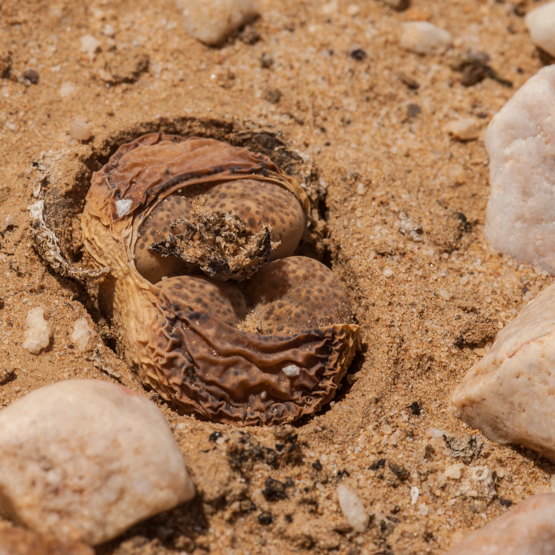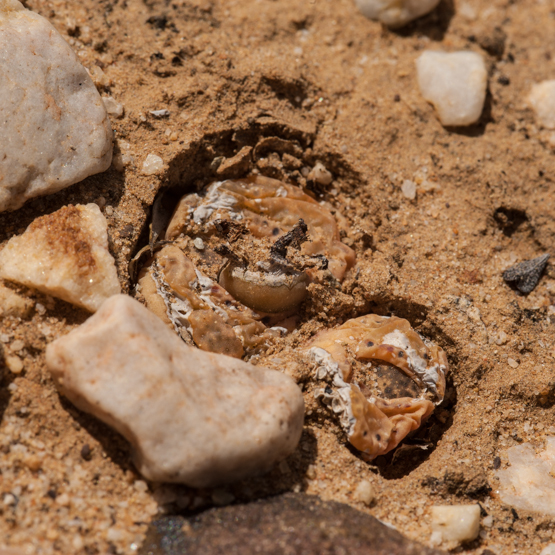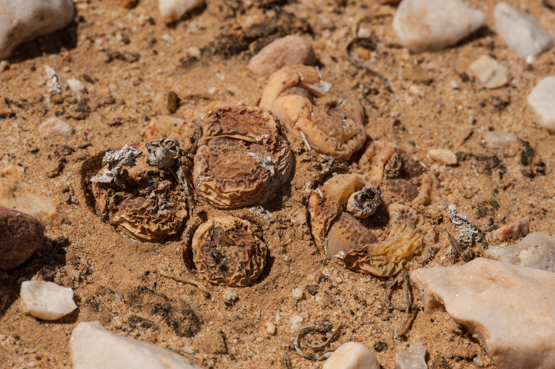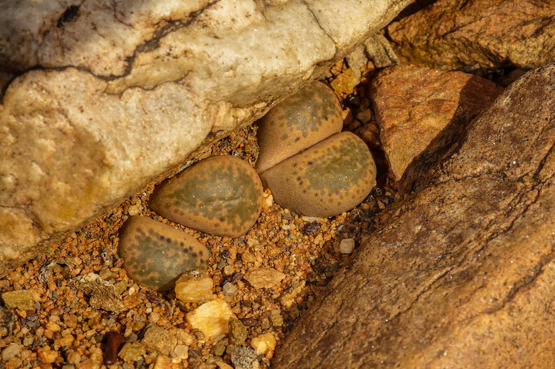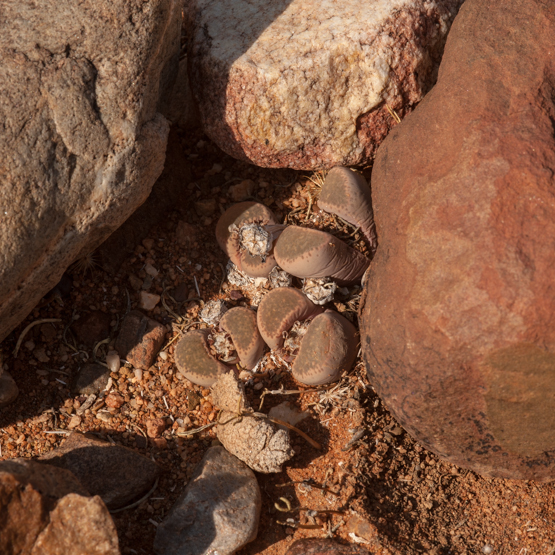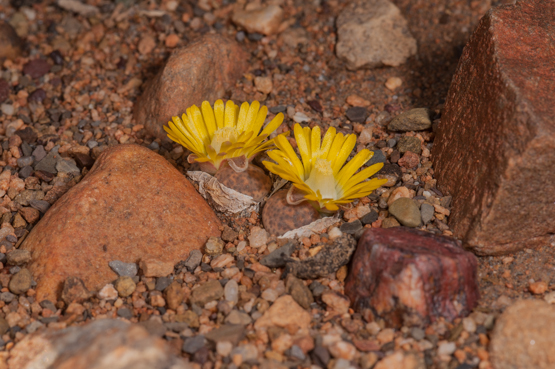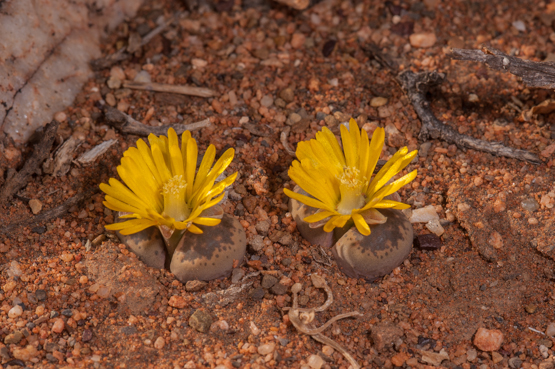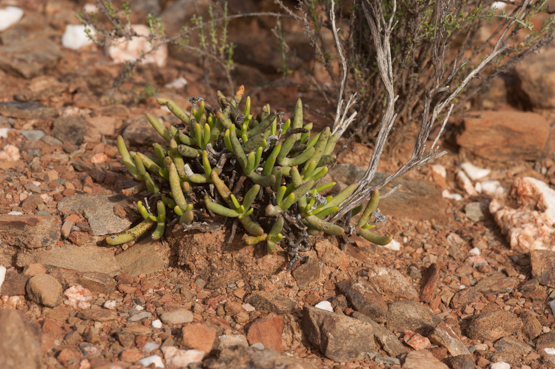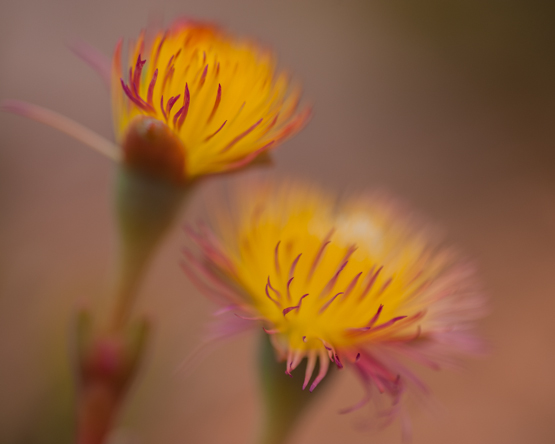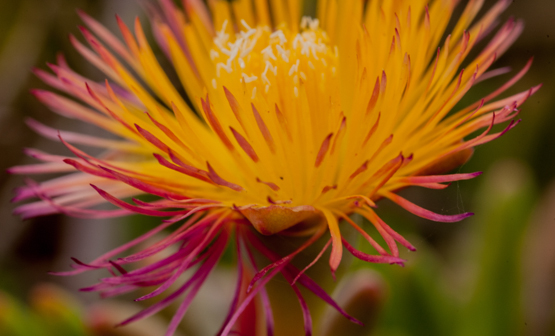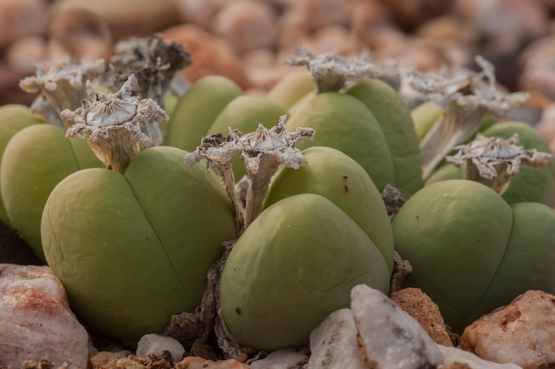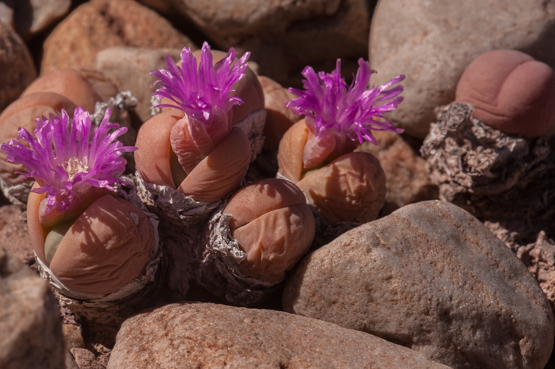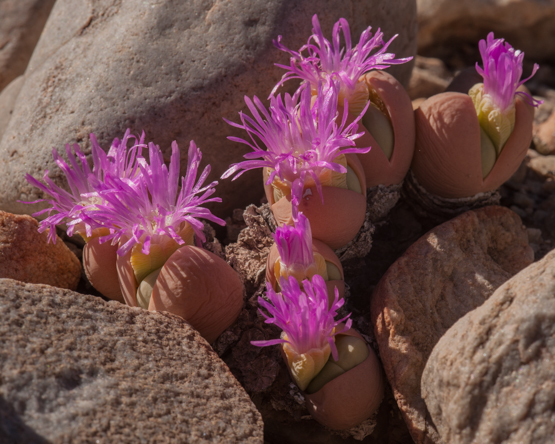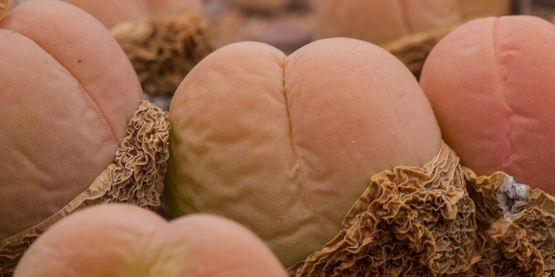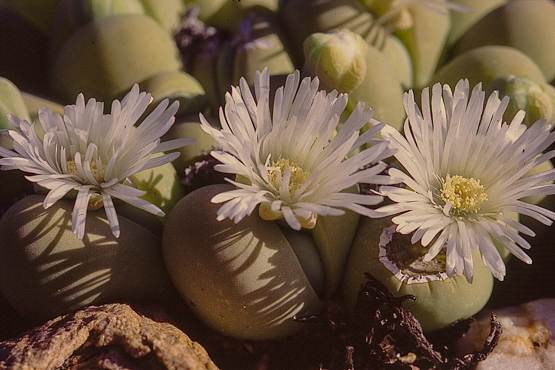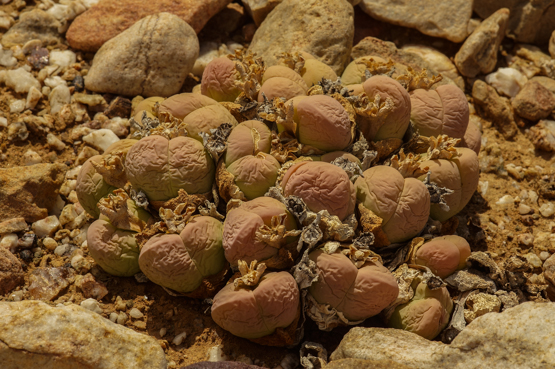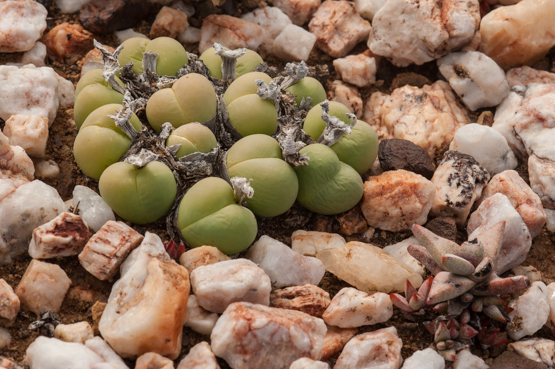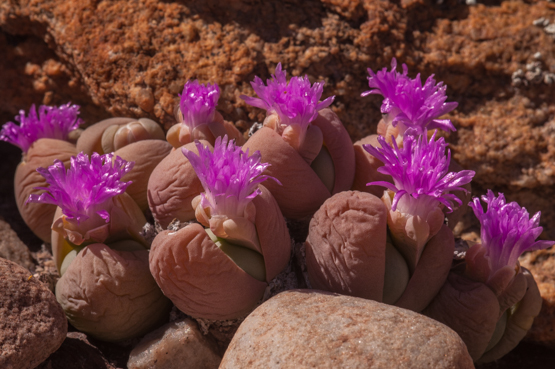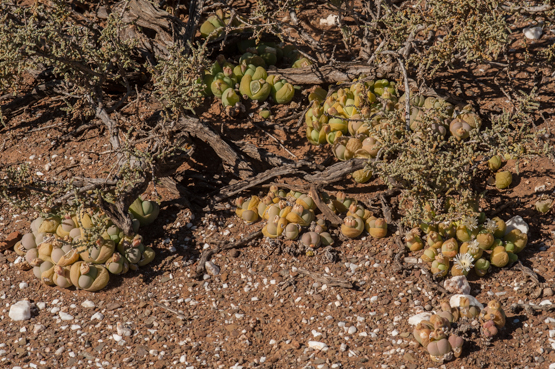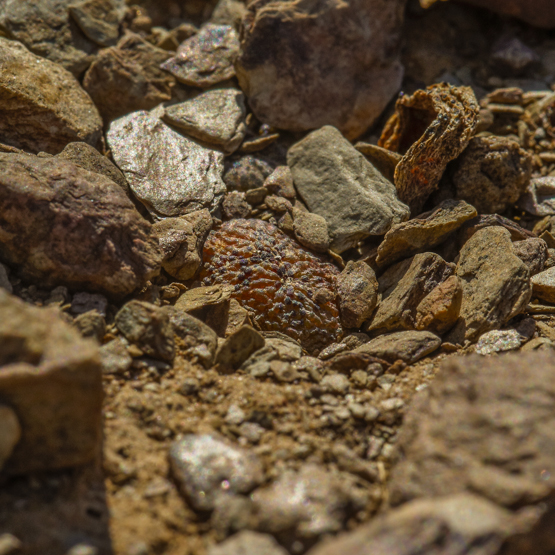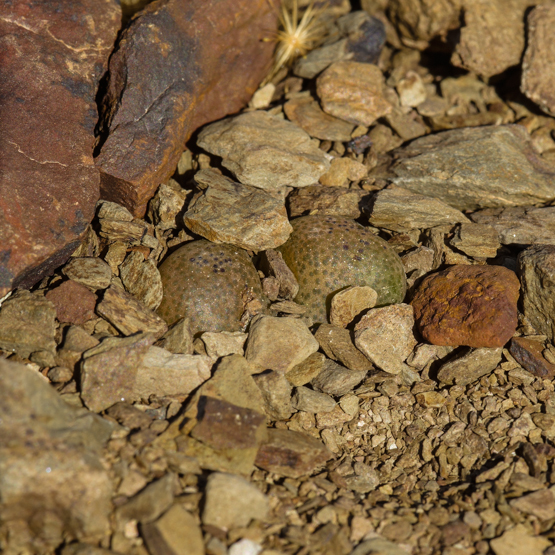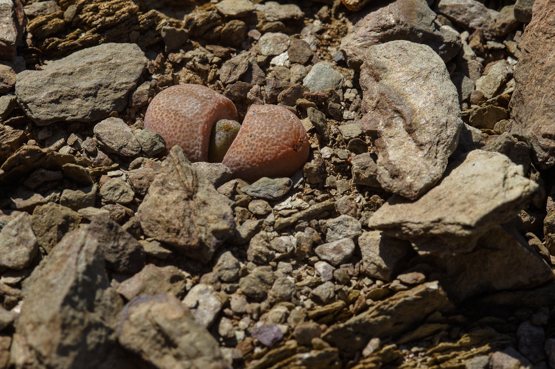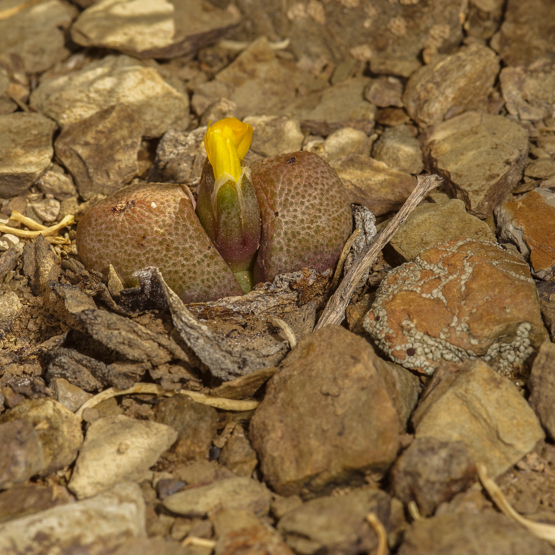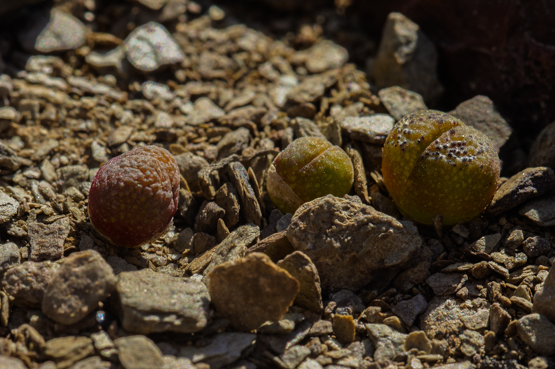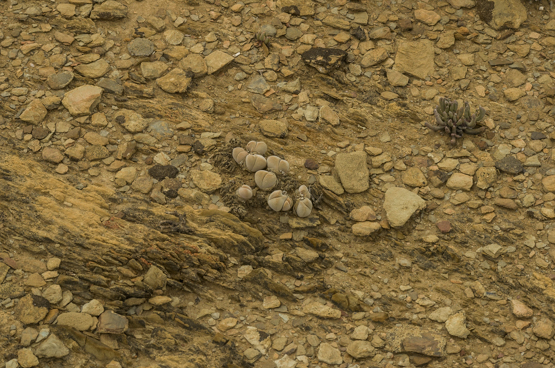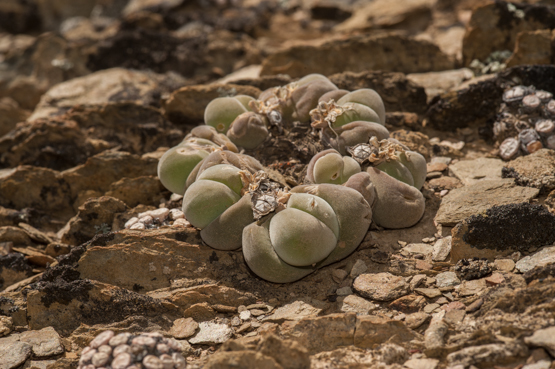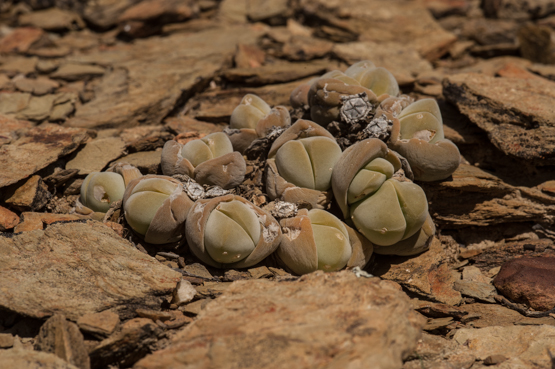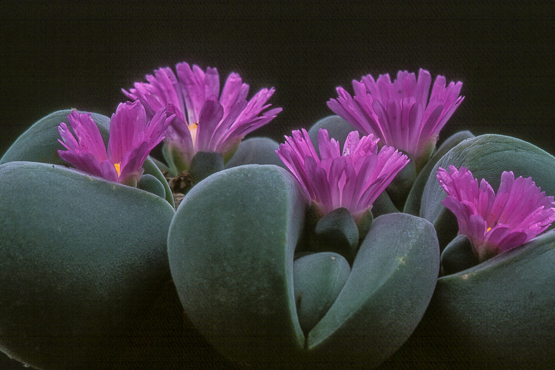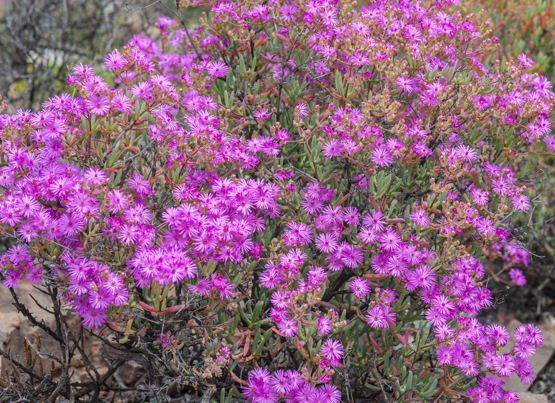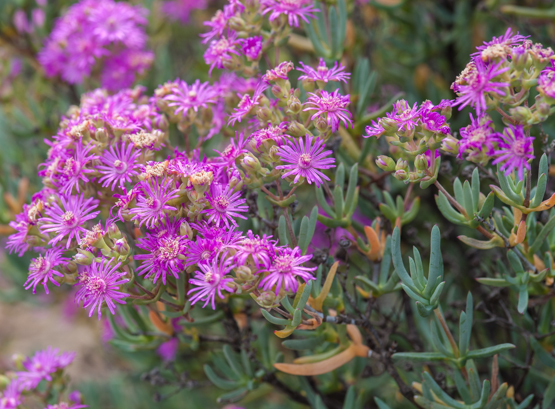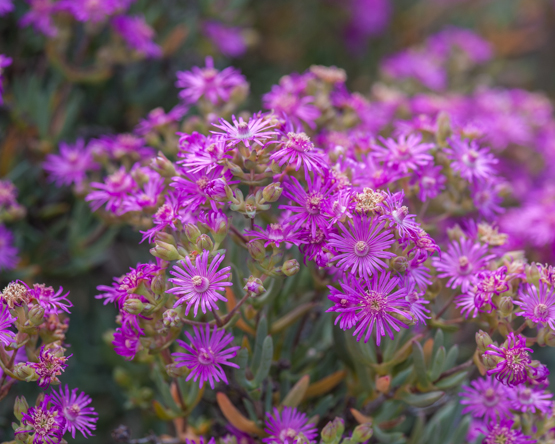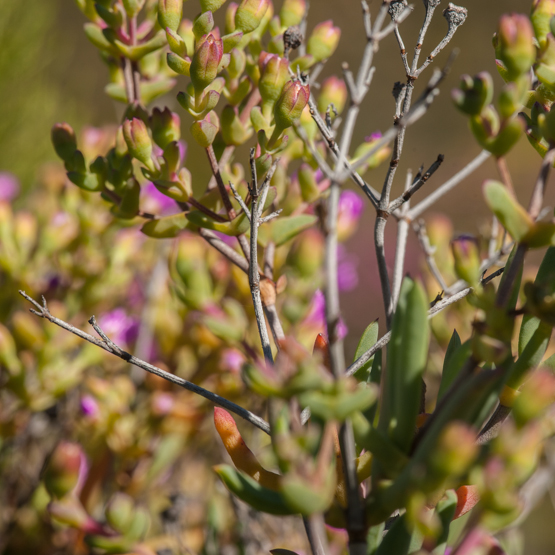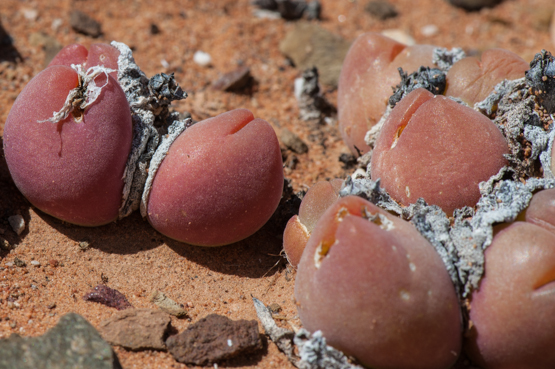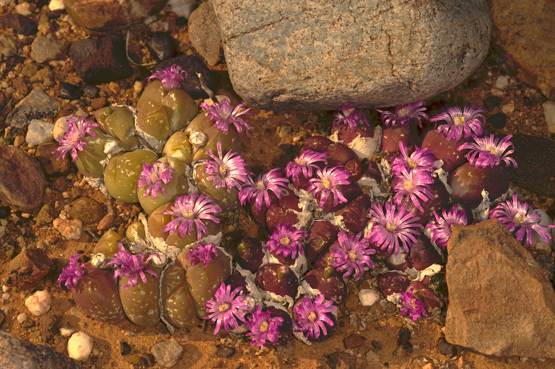All pictures below were taken on the same day (3 Oct. 2012) on the same spot near Prince Albert. Because the wet season is over, the plants are retracting into the soil (look at the sharp edges around the plants).
Tag: Mesembs
Lithops localis (1)
This is the Lithops species with the most southerly distribution area of the whole genus, in the lower Great Karoo from Laingsburg to Steytlerville. It is easily recognized because of the very dense pattern of miniature windows. Mature plants usually have 2-5 bodies, but may occasionally have more than twenty. They flower in April and May.
The naming of the species is a very confusing issue; suffice it to say here that the name L. terricolor is also in use.
All pictures below were taken on the Witteberge plateau south of Laingsburg, very near to the type locality.
No 1: 4 Sept. 2011; no 2: 29 July 2010; nos 3, 4: 21 April 2012
Hereroa odorata
Not many people will get excited, I suppose, by a plant like the one in the first picture.
But when you see the flowers you might well change your opinion. The first two pictures below seem to be exactly the same. In fact there is a small but not unimportant difference: the first of them was taken with the lens wide open (F2.8), whereas in the second one a smaller aperture was used (F11). To me the first of the pair has a rather more dream-like atmosphere. What do you think?
In the last one the camera was tilted to give a better view of the beautifully coloured outer petals.
In all species of Hereroa the flowers open in the afternoon or even later. (The pictures were taken at about 5 pm).
Gibbaeum heathii (2)
Gibbaeum heathii (1)
This species is one of the most widely distributed in the genus (from north of Laingsburg to the Calitzdorp area) and seems to feel at home especially in quartz outcrops.
It is also one of the most variable ones. In some populations the plants form clumps 15-30 cm across, in others the clumps are small, with only a few bodies. The bodies may vary from about 8 mm to 6 cm in diameter and from a few millimeters to about 6 cm in height.
According to Nel’s The Gibbaeum Handbook, the colours run from: “uniformly whitish, white greyish, metal grey to pale glaucous green, green, sometimes tinted yellowish, purplish or sometimes quite reddish (this latter colour probably indication that clump is shrivelling off)”.
The flowers can be 10 to 30 mm across and are white, pink or purple.
All pictures in this post were taken in 2009
The first picture on 8 Febr.
The second one on 31 May
Nos. three and four on 9 Oct.
More pictures to come.
Tanquana hilmarii 2
Tanquana hilmarii (1)
These little gems occur on shale banks and slopes, where they are usually hard to detect. It is a harsh and arid habitat, which at first looks totally uninteresting. When you look carefully, you will however find out that these bare spots often harbour some astonishing miniature succulents like Conophytum joubertii, Gibbaeum nebrownii, G. dispar (see post 30 Jan. this year) and this Tanquana. The scarce rainfall here is often supplemented by early morning dew seeping into the fissures between the shale layers and providing just enough water for these dwarf plants. It is a hard life, especially for young seedlings (see first picture), but the advantage of a habitat like this is that there is no competition from bigger, faster growing -and more demanding- plants.
The pictures were taken near the eastern entrance to the Anysberg Nature Reserve (the first one on 21 April 2012, the other two on 27 Sept. 2010).
More pics to come.
Gibbaeum dispar
In cultivation this species is rather common, as it is one of the easier Gibbaeums to grow and flower (see picture at bottom).
In the wild it is only found on a few very dry shaly ridges near Vanwyksdorp. According to Nel’s Gibbaeum Handbook, it is the only Gibbaeum which does not grow together with any other species of the genus.
The plants look a bit like G. album, but they are darker and softer. The flowers appear in April.
Ruschia pungens
Shrubby Mesembs are often difficult to identify with the help of literature. Once a more knowledgeable person has given you the right name, it usually seems hard to believe that you didn’t get there under your own steam.
This species is a case in point. Especially older plants are easily recognized: robust shrubs of up to a meter tall with the old inflorescences remaining on them for several years. These remains are hard and spiny, giving rising to the specific epithet.
R. pungens is a widespread species, occuring from Montagu to the Eastern Cape.
